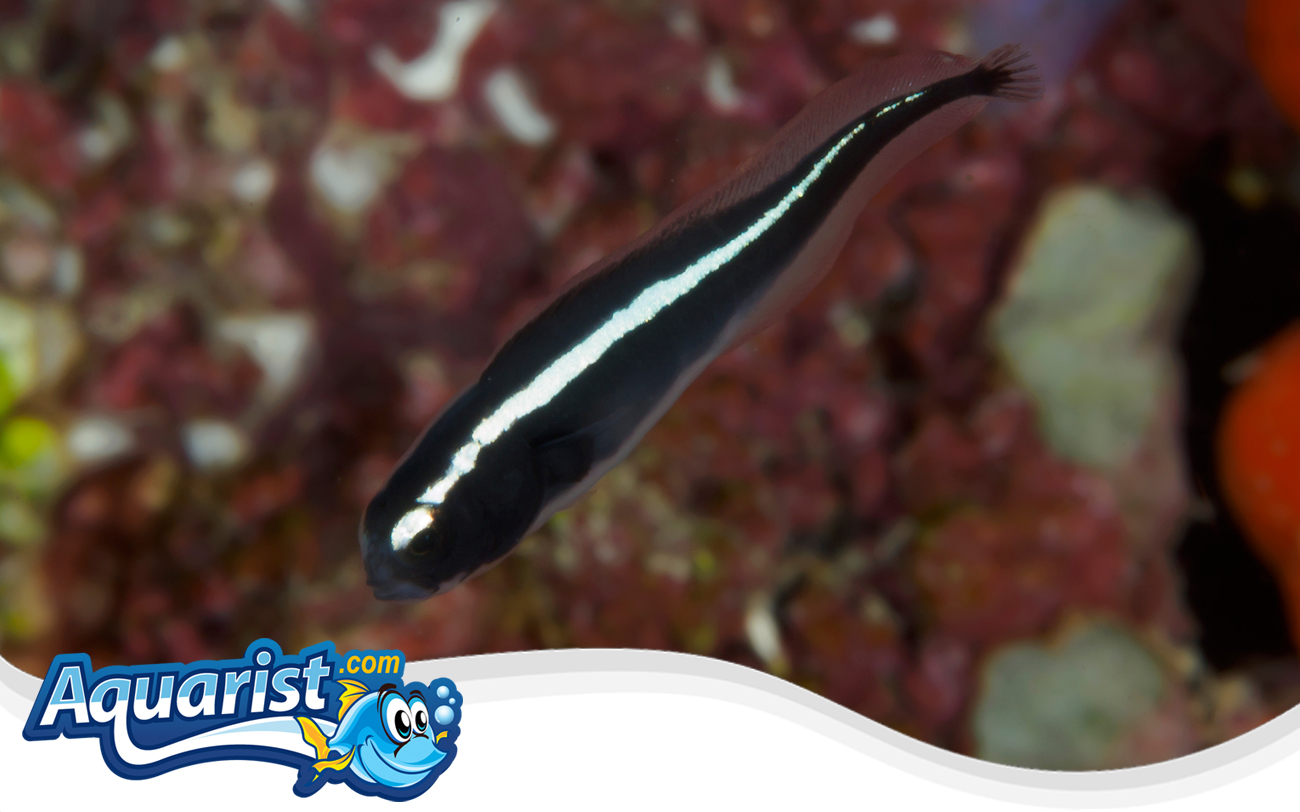Overview
- Native to the Indo-Pacific region, typically inhabiting coral reefs and rocky crevices.
- Distinctive eel-like body with striking black and white horizontal stripes, resembling a “convict” pattern.
- Known for its unique burrowing and schooling behavior, often forming large groups.
- Suitable for intermediate to advanced aquarists due to specific habitat requirements and behaviors.
Feeding
- Carnivorous; naturally feeds on zooplankton, small crustaceans, and other tiny marine organisms.
- Accepts various aquarium foods, including mysis shrimp, brine shrimp, finely chopped seafood, and marine pellets.
- Multiple small feedings per day recommended to support optimal health and activity.
- A diverse diet ensures nutritional balance and overall health.
Habitat
- Requires medium to large aquariums (minimum 50 gallons) with deep sand beds, ample hiding spots, and live rock for burrowing.
- Stable, mature aquarium conditions with excellent water quality are essential.
- Provide plenty of caves, tunnels, and crevices to mimic their natural habitat.
- Moderate water circulation and efficient filtration necessary for maintaining optimal conditions.
Fish Care
- Ideal water temperature: 72-78°F (22-26°C).
- Recommended pH level: 8.1-8.4; specific gravity: 1.020-1.025.
- Sensitive to rapid changes in water parameters; regular monitoring and consistent maintenance required.
- Regular checks for marine diseases and parasites; prompt intervention ensures continued health.
Compatibility
- Generally peaceful, best housed with other peaceful to semi-aggressive marine fish.
- Reef-safe; compatible with corals and most ornamental invertebrates.
- Suitable tank mates include peaceful wrasses, gobies, dartfish, clownfish, and other non-aggressive species.
- Avoid overly aggressive or predatory fish to ensure a stress-free environment.
Aquarium Behavior
- Active burrower and swimmer, often forming tight groups and burrowing collectively.
- Fascinating schooling behavior, especially when kept in small groups.
- Generally peaceful and reclusive; spends significant time near or within its burrows.
- Providing ample sand beds and hiding spots enhances natural behaviors and reduces stress.


